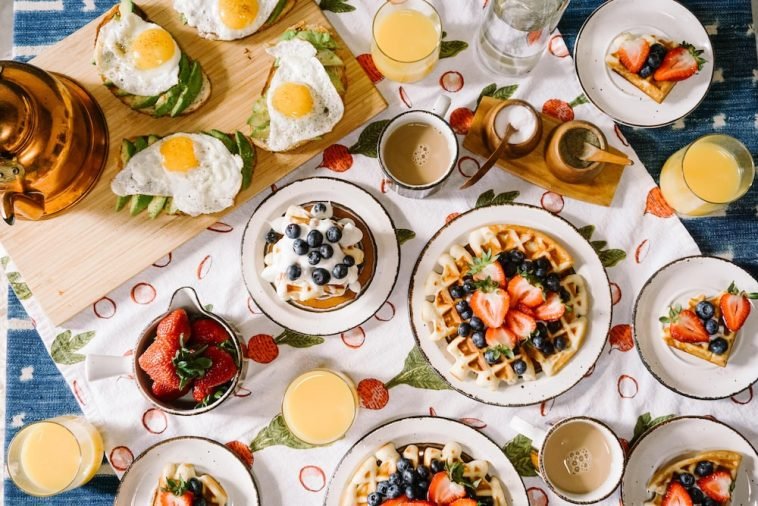Introduction.
If you’re here, you’re probably thinking about starting a food blog and turning it into something that brings in money.
Great choice! The food blogging world is thriving, and there’s always room for new, fresh voices to share unique recipes, experiences, and tips.
People love discovering new food ideas, so if you’re passionate about cooking, baking, or even just eating, a food blog could be a perfect fit for you. Plus, there’s plenty of opportunity to make money if you’re committed.
I’ll cover everything you need to know, from picking your niche to setting up your blog, creating content, attracting readers, and finding ways to make money with it. And don’t worry—I’ll keep things simple and walk you through each step. Ready to dig in?
Why Start a Food Blog?
Food blogging offers a fantastic mix of creativity, connection, and potential income. A food blog lets you share your unique perspective with people who have similar interests.
Beyond that, food blogging can open up real opportunities to earn money—whether it’s through ads, sponsored posts, affiliate marketing, or even selling your own products like cookbooks or courses.
Food bloggers can earn anywhere from a few hundred dollars a month to tens of thousands.
The popular blog “Pinch of Yum,” for example, documented its income growth from a couple of hundred dollars to $95,000 in one month, simply by sharing recipes and engaging with its audience.
Though not every blog will see that level of income, with a good strategy and consistent effort, you can still turn a food blog into a meaningful side hustle or even a full-time income.
How Do I Start a Food Blog and Make Money?
Step 1: Find Your Niche
With thousands of food blogs out there, it’s helpful to narrow down your focus. Finding a niche doesn’t mean limiting yourself; it means giving your blog a distinct angle that stands out.
Are you passionate about vegan recipes?
Maybe you’re into budget-friendly meals, family dinners, or baking treats. Some popular food blog niches include:
- Healthy Eating: Recipes focusing on nutritious ingredients, vegan, keto, or gluten-free options.
- Quick and Easy Meals: Recipes that can be made in 30 minutes or less.
- Desserts and Baking: Cookies, cakes, pastries, and more.
- Ethnic Cuisine: Specializing in a specific cultural or regional cuisine, like Italian, Thai, or Mexican.
- Budget-Friendly Recipes: Meals that are easy on the wallet.
Choosing a niche not only helps you stand out but also helps you attract a specific audience, making it easier to build a loyal following.
Step 2: Set Up Your Blog
Starting a blog is simpler than it might seem. Here’s a basic breakdown:
Choose a Platform and Hosting
You’ll want to pick a blogging platform like WordPress, which is easy to use and highly customizable. To make your blog look more professional and allow you to monetize it, it’s best to go with a self-hosted option like WordPress.org instead of WordPress.com.
For hosting, some popular options include Bluehost, SiteGround, and HostGator. These usually offer affordable plans with great support for beginners, often with a free domain name and one-click WordPress installation.
Pick a Domain Name
Your domain name is your blog’s address (like “yourblogname.com”). It should be catchy, easy to remember, and ideally related to your niche. Try to keep it short, avoid numbers or special characters, and aim for a “.com” if possible.
Design Your Blog
Once you’ve got the platform and domain set up, it’s time to design. Pick a theme that’s clean, easy to navigate, and highlights your food photos (since visuals are a big part of food blogging). WordPress offers tons of themes, both free and paid, that can make your blog look polished and professional.
Step 3: Start Creating Content
Content is the heart of your blog. Your recipes, tips, and stories are what will draw people in and keep them coming back. Here’s how to make sure your content stands out:
Write Clear, Helpful Recipes
Your readers will likely come to your blog for recipes, so make sure they’re easy to follow. Include a list of ingredients, step-by-step instructions, cooking times, and even extra tips to make the recipe foolproof.
Use High-Quality Photos
Food blogs are visual by nature, so quality photos make a big difference. You don’t need a professional camera—your smartphone will work fine with some good lighting. Natural light usually works best for food photos, and keeping the background simple will help your dish shine.
Share Personal Stories
Adding a little personal touch to each post helps readers feel connected to you. Share a little about why you love the recipe, any memories tied to it, or what inspired you to make it. This storytelling element can be what makes readers want to return to your blog.
Consistency is Key
Publishing regularly helps you build a steady audience. Aim to post once or twice a week if possible. Consistency shows readers (and search engines) that your blog is active and reliable.
Step 4: Attract an Audience
Getting readers is a big part of building a successful blog. Here’s how to get your content seen:
Use Social Media
Platforms like Instagram, Pinterest, and Facebook are perfect for food bloggers. Pinterest is especially useful for food bloggers because recipes do well on the platform, and your pins can continue attracting visitors long after they’re posted.
Optimize for SEO
Search engine optimization (SEO) helps people find your blog through search engines like Google. This might sound complicated, but at its core, it just means using keywords in your posts, like “easy chocolate cake recipe,” so people searching for that can find you. There are many free resources and plugins, like Yoast SEO for WordPress, that can help with this.
Collaborate with Other Bloggers
Working with other bloggers in your niche can help you reach new audiences. This could mean doing guest posts, sharing each other’s recipes, or even collaborating on social media.
Engage with Your Readers
Replying to comments, answering questions, and being active on social media can make a big difference in building a loyal community.
Step 5: Monetize Your Blog
Once you’ve built up some content and a regular audience, you can start thinking about making money. Here are some of the most popular ways to monetize a food blog:
1. Display Ads
Platforms like Google AdSense, Mediavine, and AdThrive can place ads on your blog, earning you money every time someone views or clicks on them. As your traffic grows, these ads can become a significant source of income.
2. Sponsored Posts
Brands may pay you to create recipes with their products or share them on your blog and social media. Make sure any sponsored content fits naturally with your blog and provides value to your readers.
3. Affiliate Marketing
With affiliate marketing, you can earn a commission by recommending products your readers can buy. Amazon Affiliates, for example, lets you earn a small percentage of sales on products you link to. Just make sure any products you recommend are ones you genuinely like.
4. Sell Your Products
If you have a particular area of expertise, you could sell digital products like e-cookbooks or courses. These can be a great way to make passive income.
5. Offer Services
If you’re skilled in food photography, recipe development, or food writing, you could offer freelance services. Many food bloggers make extra income by working with brands or magazines on the side.
FAQs
Q: Do I need to be a professional chef to start a food blog?
A: Not at all! Many popular food bloggers are self-taught cooks. What matters is your passion for food and your ability to share it in a way that’s helpful to readers.
Q: How long does it take to make money with a food blog?
A: It varies. Some bloggers start earning within a few months, while others may take a year or more. Building an audience is the most time-consuming part, but once you have a steady following, income opportunities increase.
Q: How much does it cost to start a food blog?
A: It can cost as little as $3–$5 per month for hosting, plus the price of a domain (usually around $10–$15 per year). If you decide to use premium themes or plugins, costs can go up, but many bloggers start with the basics.
Q: Can I still start a food blog if I don’t know much about photography?
A: Absolutely! There are plenty of beginner photography tips and affordable resources to help you get started. As you keep practising, your photography will improve.
Ready to Get Cooking?
Starting a food blog can be a rewarding, creative project with the potential for real income. It takes patience, consistency, and a genuine love of sharing your recipes and stories.
The path won’t be without challenges, but with a good strategy, you can make your food blog a success.
So, what’s stopping you? What’s the first recipe you’d love to share with the world?





GIPHY App Key not set. Please check settings